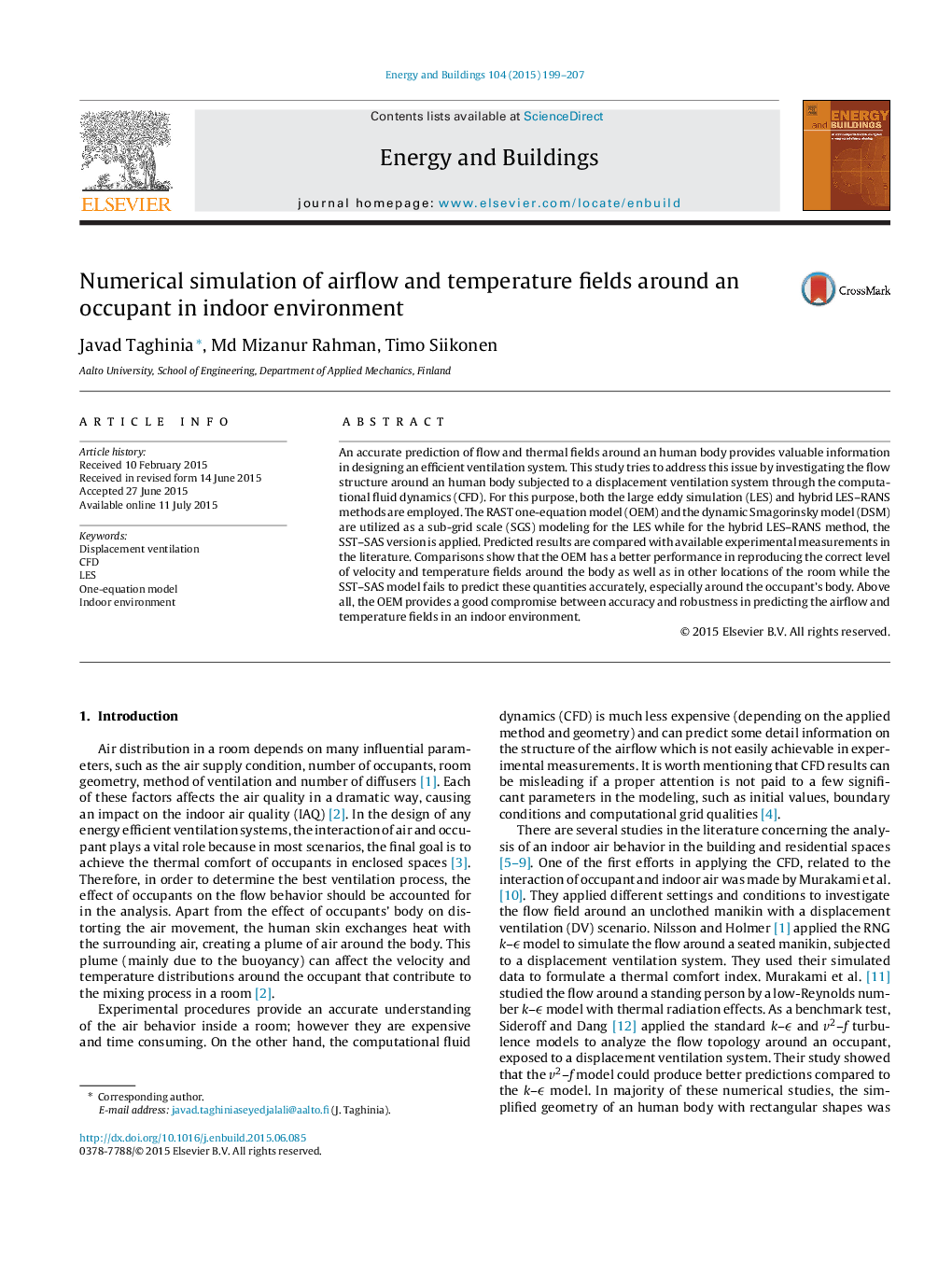| Article ID | Journal | Published Year | Pages | File Type |
|---|---|---|---|---|
| 262422 | Energy and Buildings | 2015 | 9 Pages |
•LES and hybrid LES–RANS were applied to investigate airflow around an occupant.•A realistic geometry of human body was used in this study.•One-equation and dynamic Smagorinsky models were utilized for SGS modeling of LES.•LES predictions were better than those of hybrid LES–RANS.
An accurate prediction of flow and thermal fields around an human body provides valuable information in designing an efficient ventilation system. This study tries to address this issue by investigating the flow structure around an human body subjected to a displacement ventilation system through the computational fluid dynamics (CFD). For this purpose, both the large eddy simulation (LES) and hybrid LES–RANS methods are employed. The RAST one-equation model (OEM) and the dynamic Smagorinsky model (DSM) are utilized as a sub-grid scale (SGS) modeling for the LES while for the hybrid LES–RANS method, the SST–SAS version is applied. Predicted results are compared with available experimental measurements in the literature. Comparisons show that the OEM has a better performance in reproducing the correct level of velocity and temperature fields around the body as well as in other locations of the room while the SST–SAS model fails to predict these quantities accurately, especially around the occupant's body. Above all, the OEM provides a good compromise between accuracy and robustness in predicting the airflow and temperature fields in an indoor environment.
